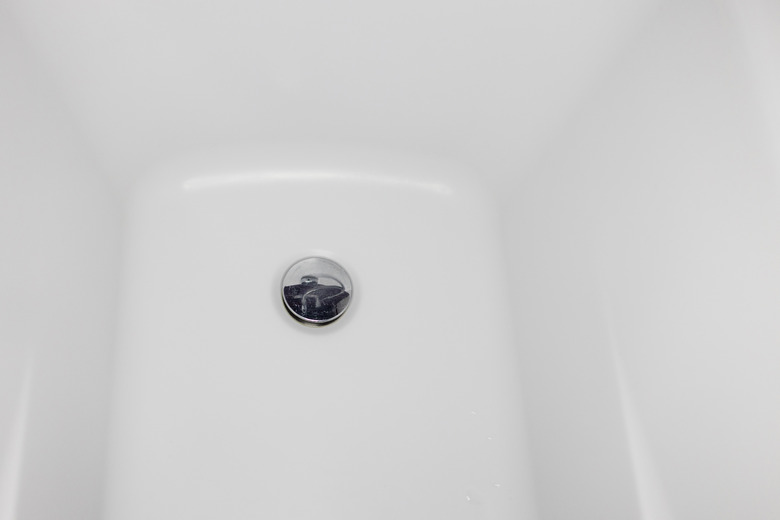How To Unclog A Drain Clogged With Cat Litter
We may receive a commission on purchases made from links.
The list of reasons why you shouldn't flush cat litter down the toilet or put it down a sink or shower drain is fairly long, but perhaps the most important one concerns water flow. A flushable cat litter may cause clogs, and a non-flushable one definitely will. All you have to do to figure that out is look at the rock-hard clumps it forms when the cat uses it.
Putting flushable cat litter down any drain isn't advisable because the litter absorbs water, gets stuck on the sides of the pipes and causes a gradual clog rather than the instantaneous one caused by clay-based litter. Used cat litter is also full of potentially dangerous pathogens that you don't want to introduce to the municipal waste processing system any more than you want cat litter in the sewer or septic system. If you're seeing this warning a little late and you've already got a clog, use mechanical means to clear it, not chemicals.
Don't Use Chemicals to Dissolve Cat Litter
Don't Use Chemicals to Dissolve Cat Litter
Most fast-acting drain cleaners contain sodium hydroxide, which turns greases and oils that cause most clogs to a soapy solution that flushes away with water. Super-strong drain cleaners contain sulfuric acid, which dissolves gunk by a different chemical reaction, but neither will dissolve pine chips, corn and wheat husks or other ingredients found in flushable litter, let alone clay. Enzymatic drain cleaners won't have much effect on the inorganic components of cat litter either.
Chemical drain cleaners can't dissolve cat litter, so they stay in the pipes. Because they generate heat when reacting with stuff in the drain other than litter, they can damage the pipes. They can also splash back out of the drain and cause skin burns to anyone who disassembles the pipes to remove the clog.
Start by Plunging and Snaking
Start by Plunging and Snaking
A plunger, used correctly, can clear 90 percent of clogs, including those caused by cat litter. Make sure you're using the correct plunger because a dome-shaped sink plunger doesn't work well for a toilet clog. For that, you need a bell-shaped or bellows-style toilet plunger.
To clear a sink drain, fill the sink with about an inch of water. Immerse the plunger and tilt it to lift one edge and let air escape so you're plunging only water instead of just compressing air. A number of vigorous pumps should break up the clog and send it on its way. Use the same method to fill the plunger with water when clearing a toilet clog.
If you aren't successful, you may have better luck with an auger, or snake, and they come in two types as well — one for toilets and one for fixtures other than toilets. Feed the snake into the drain until it won't go any farther, then crank the handle to rotate the head and eat through the obstruction.
You May Have to Disassemble the Pipes
You May Have to Disassemble the Pipes
If you dumped kitty litter in the bathtub or poured cat litter in the shower drain, you don't have access to the drain pipes and P-trap, so you'll probably have to call a plumber to clear a clog you can't budge with a plunger or snake. It's a different matter with a sink drain. The P-trap is accessible and easy to disassemble, and you can clean it manually. Removing the trap also helps a sink auger reach deeper into the drain.
If your toilet has a stubborn clog, look for a cleanout on the waste line and insert the auger from there. There may be a cleanout somewhere near the toilet, but if not, there should be one in the basement or just outside the house.
